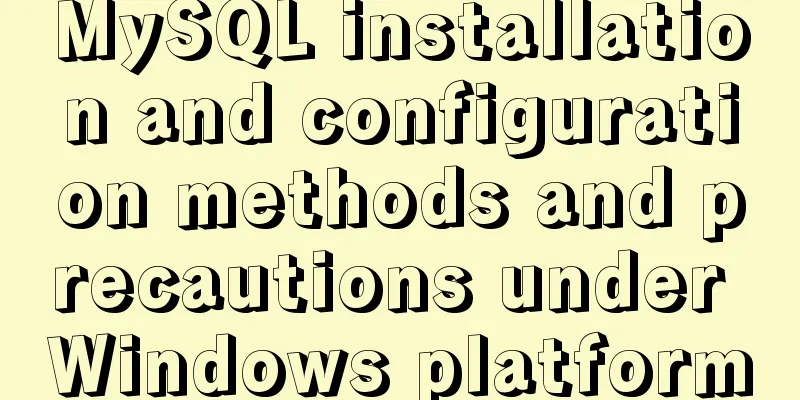How to dynamically add a volume to a running Docker container

|
Someone asked me before whether it is possible to mount volumes after the Docker container has been started. Considering how the mnt namespace works, I initially thought this would be difficult to achieve. But now I think it has been achieved.
Umount the temporary mount point created in the first step. Precautions In the following examples, I intentionally included the $ sign to indicate that this is a shell command line prompt to help you distinguish what you need to enter and what the machine replies. For some multi-line commands, I continue to use >. I realize this makes the commands in the examples not easily copy-pastable. If you want to copy and paste the code, check out the example script at the end of the article. Detailed steps The following examples assume that you have started a simple container named charlie using the following command: $ docker run --name charlie -ti ubuntu bash What we need to do is mount the host folder nsenter First, we need nsenter and the docker-enter helper script. Why? Because we want to mount the file system from the container. Due to security considerations, the container does not allow us to do this. Using nsenter, we can break through the above security restrictions and run arbitrary commands in the context of the container (strictly speaking, the namespace). Of course, this requires root privileges on the Docker host. The simplest way to install nsenter is to run it in conjunction with the docker-enter script: $ docker run --rm -v /usr/local/bin:/target jpetazzo/nsenter For more details, see the nsenter project homepage. Find the file system We want to mount the file system containing the host folder (/home/jpetazzo/Work/DOCKER/docker) in the container. Then we need to find out which file system contains this directory. First, we need to canonicalize (or dereference) the file in case it is a symbolic link, or its path contains symbolic links: $ readlink --canonicalize /home/jpetazzo/Work/DOCKER/docker /home/jpetazzo/go/src/github.com/docker/docker Ha, it is indeed a symbolic link! Let's put this into an environment variable: $ HOSTPATH=/home/jpetazzo/Work/DOCKER/docker $REALPATH=$(readlink --canonicalize $HOSTPATH) Next, we need to find out which filesystem contains this path. We do this using a somewhat unexpected tool: df: $ df $REALPATH Filesystem 1K-blocks Used Available Use% Mounted on /sda2 245115308 156692700 86157700 65% /home/jpetazzo Use the -P flag (to force POSIX format, in case you have an exotic df, or someone else's df when installing Docker on Solaris or BSD), and put the result into a variable as well:
$ FILESYS=$(df -P $REALPATH | tail -n 1 | awk '{print $6}')
Find the device (and sub-root) of the file system Now, there are no bind mounts or BTRFS subvolumes on the system, we just need to look in /proc/mounts and find the device corresponding to the /home/jpetazzo file system. But in my system, /home/jpetazzo is a subvolume of the BTRFS pool. To get the subvolume information (or bind mount information), you need to check /proc/self/moutinfo. If you've never heard of mountinfo, check out the kernel documentation for proc.txt. First, get the file system device information: $ while read DEV MOUNT JUNK > do [ $MOUNT = $FILESYS ] && break > done </proc/mounts $ echo $DEV /dev/sda2 Next, get the sub-root information (i.e. the path to the mounted file system): $ while read ABC SUBROOT MOUNT JUNK > do [ $MOUNT = $FILESYS ] && break > done < /proc/self/mountinfo $ echo $SUBROOT /jpetazzo very good. Now we know we need to mount $ SUBPATH=$(echo $REALPATH | sed s,^$FILESYS,,) Note: This method only works if there is no "," in the path. If you have a "," in your path and want to mount the directory using the method in this article, please let me know. (I need to invoke the Shell Triad to solve this problem: jessie, soulshake, tianon?) The last thing to do before entering the container is to find the major and minor numbers of the block device. You can use stat: $ stat --format "%t %T" $DEV 8 2 Note that these two numbers are in hexadecimal, we will need binary later. This can be converted like this: $ DEVDEC=$(printf "%d %d" $(stat --format "0x%t 0x%T" $DEV)) Summarize There is one last step. For some reason I can't explain, some filesystems (including BTRFS) update the device field in /proc/mounts after being mounted multiple times. That is, if we create a temporary block device called /tmpblkdev in the container and use it to mount our own filesystem, the filesystem will appear (on the host machine!) as /tmpblkdev, not /dev/sda2. This may sound harmless, but in practice it will cause subsequent attempts to get the file system block device to fail. Long story short, we want to make sure that the block device nodes in the container are located at the same path as on the host machine. You need to do this: $ docker-enter charlie --sh -c \ > "[ -b $DEV ] || mknod --mode 0600 $DEV b $DEVDEC" Create a temporary mount point to mount the file system: $ docker-enter charlie --mkdir /tmpmnt $ docker-enter charlie --mount $DEV /tmpmnt Make sure the volume mount point exists and bind mount the volume: $ docker-enter charlie --mkdir -p /src $ docker-enter charlie --mount -o bind /tmpmnt/$SUBROOT/$SUBPATH /src Delete the temporary mount point: $ docker-enter charlie --umount /tmpmnt $ docker-enter charlie --rmdir /tmpmnt (We don't clear the device node. It might be redundant to check if the device exists in the first place, but it's already complicated enough.) Mission accomplished! Automate everything The following paragraph can be copied and pasted directly.
#!/bin/sh
set -e
CONTAINER=charlie
HOSTPATH=/home/jpetazzo/Work/DOCKER/docker
CONTPATH=/src
REALPATH=$(readlink --canonicalize $HOSTPATH)
FILESYS=$(df -P $REALPATH | tail -n 1 | awk '{print $6}')
while read DEV MOUNT JUNK
do [ $MOUNT = $FILESYS ] && break
done </proc/mounts
[ $MOUNT = $FILESYS ] # Sanity check!
\while read ABC SUBROOT MOUNT JUNK
\do [ $MOUNT = $FILESYS ] && break
\done < /proc/self/mountinfo
[ $MOUNT = $FILESYS ] # Mount sanity check!
SUBPATH=$(echo $REALPATH | sed s,^$FILESYS,,)
DEVDEC=$(printf "%d %d" $(stat --format "0x%t 0x%T" $DEV))
docker-enter $CONTAINER -- sh -c \
"[ -b $DEV ] || mknod --mode 0600 $DEV b $DEVDEC"
docker-enter $CONTAINER --mkdir /tmpmnt
docker-enter $CONTAINER --mount $DEV /tmpmnt
docker-enter $CONTAINER --mkdir -p $CONTPATH
docker-enter $CONTAINER --mount -o bind /tmpmnt/$SUBROOT/$SUBPATH $CONTPATH
docker-enter $CONTAINER --umount /tmpmnt
docker-enter $CONTAINER --rmdir /tmpmnt Status and limitations The above method does not apply to file systems that are not based on block devices. It only works when /proc/mounts can correctly obtain the block device node (as mentioned above, it is not always possible to obtain it correctly). Also, I've only tested this in my own environment, not in a cloud instance or something, but I'd be interested to see if it holds true there. The above is the full content of this article. I hope it will be helpful for everyone’s study. I also hope that everyone will support 123WORDPRESS.COM. You may also be interested in:
|
<<: Detailed explanation of cocoscreater prefab
>>: Sequence implementation method based on MySQL
Recommend
How to execute PHP scheduled tasks in CentOS7
Preface This article mainly introduces the releva...
How to implement function currying and decurrying in Javascript
Function currying (black question mark face)? ? ?...
jQuery implements breathing carousel
This article shares the specific code of jQuery t...
Detailed tutorial on integrating Apache Tomcat with IDEA editor
1. Download the tomcat compressed package from th...
VUE Getting Started Learning Event Handling
Table of contents 1. Function Binding 2. With par...
Detailed explanation of the problem of mixed use of limit and sum functions in MySQL
Preface Today, after synchronizing the order data...
Summary of Linux vi command knowledge points and usage
Detailed explanation of Linux vi command The vi e...
Example code for hiding element scrollbars using CSS
How can I hide the scrollbars while still being a...
Don't forget to close the HTML tag
Building web pages that comply with Web standards ...
Synchronize the full and incremental data of a specific MySQL table to the message queue - Solution
Table of contents 1. Original demand 2. Solution ...
Detailed explanation of javascript knowledge points
Table of contents 1. Basic Introduction to JavaSc...
SQL implementation of LeetCode (181. Employees earn more than managers)
[LeetCode] 181.Employees Earning More Than Their ...
MySQL download and installation details graphic tutorial
1. To download the MySQL database, visit the offi...
Detailed explanation of MySQL master-slave replication and read-write separation
Article mind map Why use master-slave replication...
Detailed explanation of commonly used styles in CSS3 [Basic text and font styles]
Summary: In order to make your web page look more...









